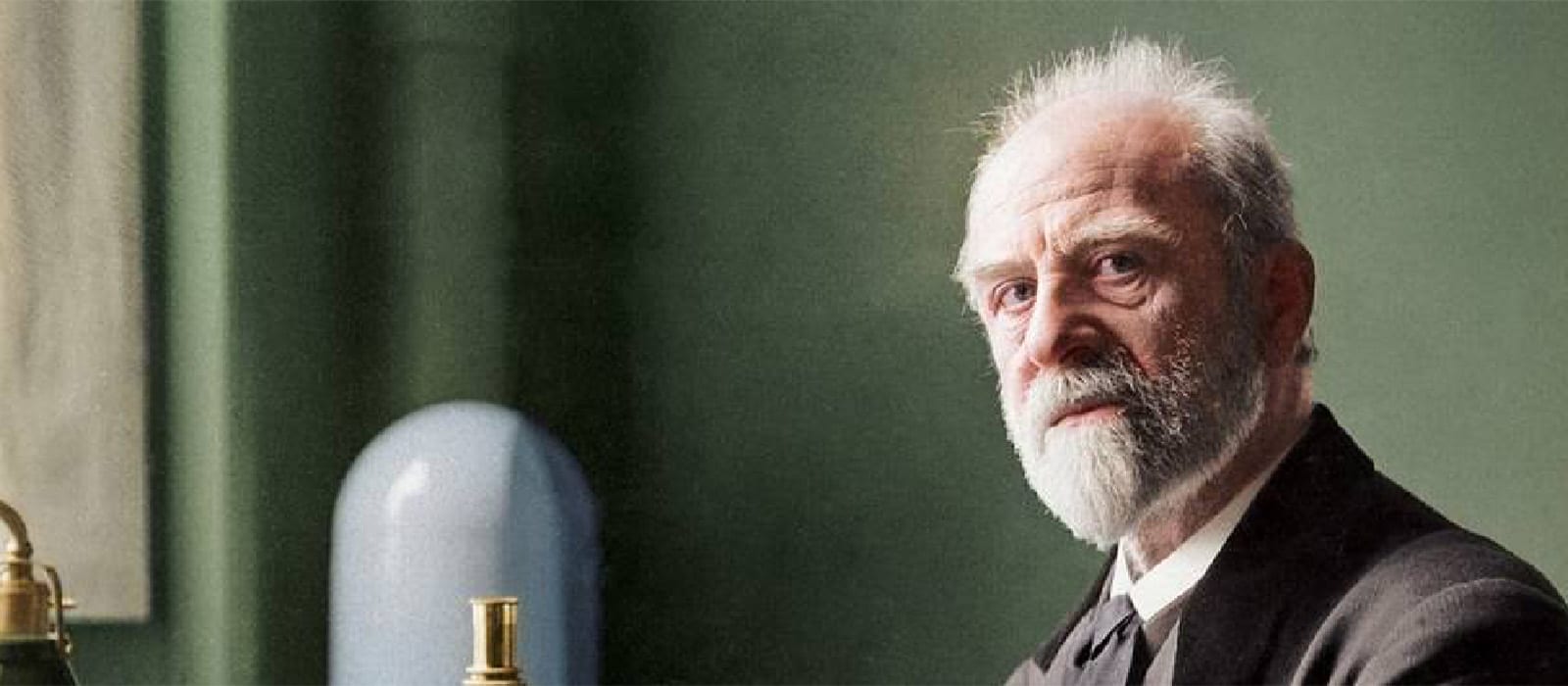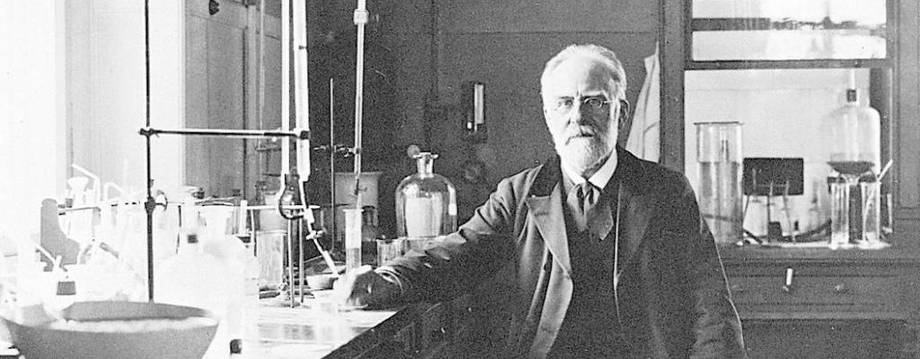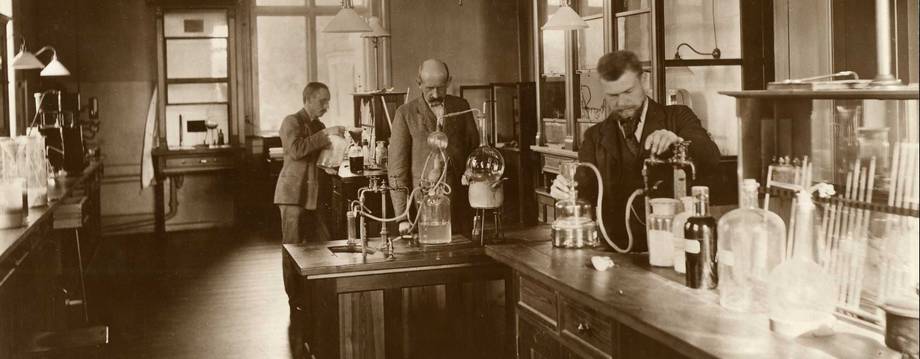LEGENDS of BREWING: Emil Christian Hansen
LEGENDS of BREWING: Emil Christian Hansen

Before Emil Christian Hansen cultivated the first pure yeast culture, he wanted to be an actor. Then, a portrait artist. For a time, he taught, and wrote under a pseudonym. He made the first Danish translation of Charles Darwin’s Voyage of The Beagle, and he revolutionised the brewing industry.
134 years after his momentous work, Wishful Drinking is here to shed some light on the man behind Saccharomyces carlsbergensis. Emil Christian Hansen was born in an old half-timbered house on Nederdammen 35 in the town of Ribe, Denmark on May 8th 1842, to a laundress mother and an alcoholic, former-soldier father.
The source of Joseph Christian Hansen’s woes likely went beyond the bottom of a bottle, and certainly weren’t resolved there, but it did prove to be his son’s fortune. With his father absent and/or drunk, Emil had to support the family himself, which meant abandoning school, where he had shown himself to be the brightest pupil; an avid reader with an insatiable desire to learn.
At 13, Emil became an apprentice to a local grocery merchant, who found him unruly and wild. He was released from the apprenticeship after a year, and joined his father as a decorator of theatre sets. For a time, Emil was inspired by the performing troupes around him and dreamed of being an actor – something his father disapproved of. At the age of 19, he set his mind on becoming a portrait artist, and travelled to Copenhagen to show his work to the artist Jørgen Roed. His advice was that Emil must earn to draw from scratch, which Emil found he could not. His application to the Academy of Fine Arts was refused, rather fortunately for the worldwide beer industry.
Fired up by his father’s tales of life in the Foreign Legion, Emil flirted with volunteering for Garibaldi’s army in 1862, but settled instead on the much more sensible idea of becoming a teacher. He obtained a position tutoring the children of the caretaker at Holsteinborg Castle, the home of Danish politician Count Ludwig Holstein, a friend of Hans Christian Anderson. Here, Emil filled in the gaps of his own education, learning Latin from Count Holstein’s tutor, and attending degree seminars at the teaching training institute at Blågård Seminarium in Copenhagen, where he qualified in 1864.
For the ambitious Hansen, teaching was just a stepping stone and, inspired by a local botanist and teacher Peter Nielsen, the 22-year-old set his sights on a degree in natural history from the University of Copenhagen. Money was always an issue and Emil employed his creative streak to pay his way, writing stories for almanacks and magazines under the name “EC” Hansen. He fought off typhoid to complete his undergraduate examinations in 1869, after which he returned to teaching, this time in zoology and botany.

Here, the seed of a lifelong obsession with microorganisms began to flourish, encouraged by one of his university teachers, the entomologist JC Schiødte. Two years later, Hansen took further university exams and became private assistant to Professor Japetus Steenstrup. In 1873, Emil discovered the fossilised remains of beech trees deep in a peat bog in Femsølyng, and proposed to the Natural History Association that beech trees had existed in Denmark a lot longer than anyone, including Steenstrup, thought.
His professor’s response was rather cool, and the lack of backing infuriated Emil, who once more abandoned a position of employment. Without a reliable source of income, Hansen’s next venture was to translate The Voyage of The Beagle by Charles Darwin alongside his fellow student Alfred Jørgensen. For the next few years, Hansen focussed on a master’s degree in plant physiology, winning a gold medal for his dissertation on the fungi that grows on mammalian manure.
Next Professor Peter Ludwig Panum invited him to study fermentational physiology at his laboratory in Copenhagen. According to the Danish Biographical Lexicon, Hansen’s tough childhood years and the (possibly imaginary) opposition to his first scientific work impressed upon him now more than ever, and he poured himself into intensive research.
In January 1877, brewer Jacob Christian (J.C.) Jacobsen from Ny Carlsberg called upon Professor Steenstrup for a recommendation. Jacobsen had read Louis Pasteur’s treaty on hygiene in beer production, and resolved to build a grand laboratory with modern equipment to introduce new scientific methods to his brewery. For this, he needed a scientist, diligent, thorough, and hardworking, to make daily observations of yeast. Steenstrup suggested Hansen, and his fate was sealed. Hansen would work at the Carlsberg Laboratory for the rest of his life.
His first project was to complete his doctoral dissertation, on the microorganisms found in beer. He showed that there were not one but two forms of the bacteria that Pasteur had identified in 1876 as being responsible for one of the seven forms of beer spoilage. From this, he surmised that the different types of beer yeast were also physiologically different, in that they could exhibit different chemical reactions even if they were inseparable by size, shape, or colour. He invented methods for classifying and identifying yeast strains based on these ideas, always forging new paths for himself. With his PhD finally achieved at the age of 37, Emil was appointed as the head of the Department of Physiology at Carlsberg Laboratory.

Next, he set out to prove his hunch that not only bacteria but wild yeast was the cause of beer spoilage. He lamented: “The spent yeast is spilled in the yard, and carried down into the fermentation cellars on the boots of the workers, or it dries to dust out there, and is blown by the wind into the coolships. From here some of the organisms of disease reach the fermenters, where they start to develop. To begin with they develop slowly, so that there is no sign of danger, but in the end there is so much wild yeast in the pitching yeast that the disease breaks forth. From that moment, the development runs with tearing speed, and soon all the beer in the brewery will be infected.”
If he was right, then no matter how clean of bacteria your brewery was, if you re-used your yeast by backslopping it, then a bad brew would mean bad beer forevermore. To prove it, Hansen would have to test out individual strains of yeast to observe the effect they had on beer.
Over the next few years, Hansen developed a clever method to isolate an individual yeast cell. He would place a single drop of yeast solution on a microscope cover glass marked with a grid, and count how many yeast cells were in that single drop. If there were 20, he would then dilute a single drop of the same yeast solution by 20, and then draw twenty drops to be cultured. On average, each drop would contain one yeast cell. The cultures that grew just one colony of yeast were presumed to be pure. In the autumn of 1882 Hansen travelled to Berlin to meet the famous microbiologist, Robert Koch and observe techniques that would further enhance his work. Amid the research, Hansen also found the time to marry Mathilde Vilhelmine Caroline Jensine Melchior in a ceremony at Holsteinborg, where he once taught, and they lived in accommodation provided by the brewery all their lives. His harsh childhood had left him somewhat humourless, but he was known to be a kind man, especially to the poor.

By 1883, Hansen’s work became critical. Batch after batch of bad beer was spoiling Carlsberg’s brew. The pressure was on Hansen to figure out the cause of the ‘yeast sickness’. By this time, he had proved that Carlsberg’s yeast, which had come from the Spaten Brewery in Munich four decades before, was now a mixture of two different types of yeast. One was the original, which he named Carlsberg Unterhefe (bottom yeast) No. 1, and one was an imposter, marked out by its ellipsoid shape, which he named Carlsberg Unterhefe No. 2. By carefully brewing separate batches with the single cell cultures, Hansen proved without doubt that Carlsberg No. 2 caused the bitter taste and bad odour that marred Carlsberg’s output. The imposter yeast matched a sample taken from the nearby orchard, laying the blame squarely at the feet of a wild yeast.
Hansen renamed yeast No. 1 as Saccharomyces carlsbergensis, and on 12 November 1883, the Old Carlsberg Brewery brewed its first batch with the pure strain. By 1884 the entire production of 200,000 hectolitres of beer was based on pure strains of yeast, as was the almost equal quantity manufactured at the New Carlsberg Brewery of Carl Jacobsen. In a move that truly revolutionised the beer industry, JC Jacobsen began sending out samples of Carlsberg No. 1 free of charge, under the guiding principles of scientific discovery. Suddenly, it was goodbye to back-slopping and hello to the era of commercially available brewer’s yeast that was guaranteed to produce a good result.
By 1888, Hansen claimed that all the major breweries in Denmark and Norway were using Carlsberg No. 1. It was also common in many highly reputed breweries in Russia, the Netherlands, and Germany and adopted by at least some in Sweden, Finland, Austria-Hungary, Switzerland, Italy, France, Belgium, and North America. Carlsberg had even sent pure yeast cultures to Asia, Australia, and South America. All this within five years, and via 19th century transport, no less. By 1892, Pabst, Schlitz and Anheuser-Busch in North America alone manufactured 2.3 million hl with pure yeast strains. The Hansen method was also applied to baker’s yeast so that it too could be propagated in an industrial manner.
By 1888, Hansen claimed that all the major breweries in Denmark and Norway were using Carlsberg No. 1
“Hansen’s major effort consisted in replacing foolish theories and solving speculation with clear examples and facts that had practical consequences,” proclaimed his German colleague K. Windisch. Fermentation scientists were soon travelling to Carlsberg to learn the ‘Hansen method’ for isolating pure strains from the man who not only turned established notion its head, but picked it up and scraped off the gunk from the underside. Between 1880 and 1900, 130 kinds of yeast were described using methods from Hansen.
Hansen was widely recognised for his important work, with honorary doctorates from the universities of Uppsala, Geneva and the Vienna Technical College. In 1889 he was made a Knight of the Dannebrog by King Christian IX, and in 1890, he became a member of the Danish Science Society. He was made a titular professor in 1892. To commemorate 25 years with the Carlsberg Laboratory, he received a gold medal from Carl Jacobsen in 1902. Six years later, he was made a Commander of the Dannebrog by King Frederick VIII.
Hansen continued to work on yeast until 1909, when he became sick following the illness of his wife. He travelled to a sanatorium in Hornbæk, hoping that the peace and quiet of the country would help him recover so he could get back to his work. His illness progressed to a fever, and he died shortly after, on August 27, 1909. He was recognised with a full-page obituary in Nature magazine, and is buried in Vestre Cemetery, Copenhagen. He left behind a large library, especially rich on the history of science, and a considerable fortune, with 50,000 Danish kroners set aside to establish the Emil Christian Hansen Foundation for prizes in microbiology research. His legacy lives on in not only this, but in almost every bottle of lager we drink.
Article Source – Ferment, Beer 52
Come on In!
SUN - THURS
12:00pm - 11.00pm
FRIDAY
12:00pm - 11.30pm
Saturday
11:00am - 11:30pm
Last order 30 mins before closing
Contact US
Phone Us
07477 495 015
Email Us
Address
124, High Street, Rickmansworth,
Hertfordshire, WD3 1AB
